Motorhome advice: Motorhome tips for beginners
Buying your first motorhome is one of life’s great moments and, while long-time motorhomers will invariably be full of helpful advice, it pays to plan your first trip to avoid any blunders.
It’s also worth doing things in your own way. While certain basic tasks (plugging in mains hook-up, for example) are a set procedure, many other aspects of motorhoming are down to your personal preference.
Here, however, are some useful tips ahead of that first adventure in your motorhome. If you're new to motorhomes, our guide can help you prepare for that debut trip.
Buying Your Perfect Motorhome, the 2024 edition is available now, including everything you need to know about your first motorhome, with essential guides, top tips and buying advice available to buy here
Stay at home in your motorhome before you leave home
Modern motorhomes can be complex, so it pays to do your homework before you leave home and check you know how the various devices work.
You should have had a comprehensive handover but it’s easy to miss information.
Many people who are new to motorhomes decide to stay overnight on their driveway before heading off to a campsite. It's a good idea as you can identify things that may become an issue further down the line. You may find the front bed extension pieces or the table extension rob too much storage space or get in the way when you’re trying to move through the vehicle.
Set the vehicle up as if it’s night-time and check you know how all the blinds work, where the cab screens are located and how to arrange the bed if it’s not permanently in place.
Get MMM for just £29.99 a month!

MMM is Britain’s best-selling motorhome magazine and it has been for over 55 years. Each four-weekly issue is packed with the best motorhome travel features, genuine reader reviews of campsites, in-depth motorhome reviews, plus the latest technical advice, buying tips and much more.
MMM’s fully searchable digital library gives you access to the latest issues, plus every edition of MMM since January 2012.
Check your heating controls
Being warm is a major consideration when motorhoming in the UK so make sure you’re familiar with the heating controls before setting off.
Do you have a full gas bottle? Is the LPG tank or diesel tank brimmed? You don’t want to run out in the middle of the night.
Removable gas bottles usually come in two colours: orange for propane and blue for butane. Propane is considered preferable in the UK as it stays as gas at lower temperatures.
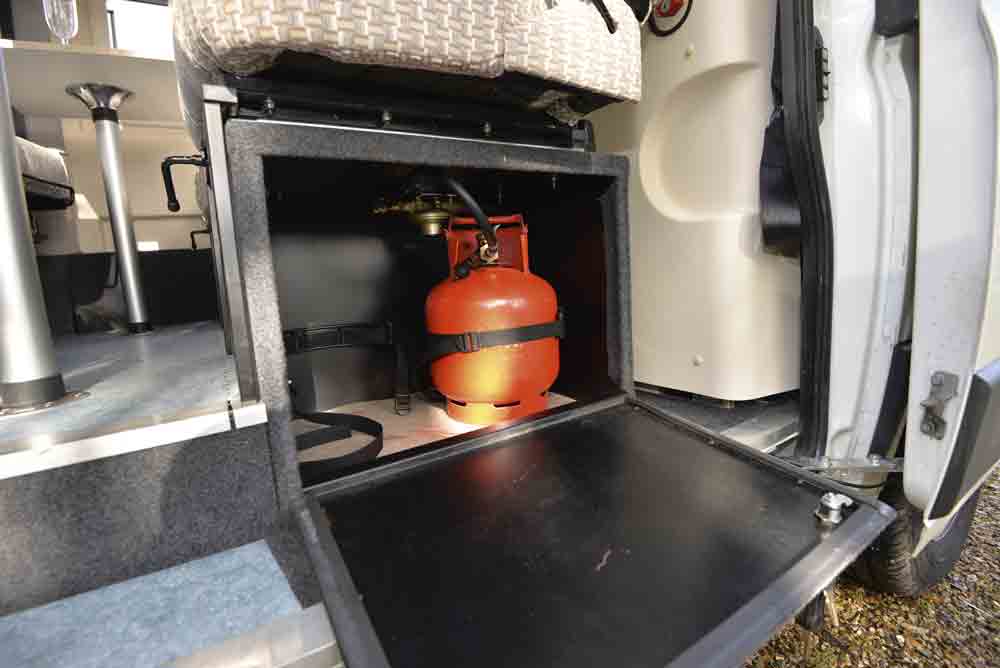
It’s hard to tell how much gas is left in a bottle, but the best method is to simply weigh it – bathroom scales are fine for this. A 6kg orange propane cylinder weighs around 9kg when empty and around 15kg when full.
A gas spanner is usually needed to swap over the cylinders, which have a reverse thread. The regulators are unique to each type of gas so there’s no danger of using the wrong bottle – it won’t fit. Pack the gas spanner (or an adjustable spanner) in your gas locker for easy cylinder swaps.
Replacement gas bottles are available at filling stations, garden centres and motorhome dealers. Some campsites also sell bottles if you get stuck, but don’t rely on this as you can never guarantee the sizes and types they stock.
If you have a fixed LPG tank on your motorhome it’s worth familiarising yourself with how to refill it – in the UK this usually involves attaching a bayonet-style fitting and holding a button down until the tank is full. Releasing it usually involves a loud hiss, which can be alarming the first time it happens, but is normal!
Not all petrol stations stock LPG, so consult a website such as drivelpg.co.uk to find one nearby.
Pack light in your motorhome
You’ll need to add kitchen and dining ware, as well as your bedding, clothing and any outdoor gear - like chairs and barbecues - to your motorhome. Be mindful of weight. Only pack the minimum amount of stuff you need.
Some top weight savers are to pack melamine mugs and plates, and microfibre towels in the washroom. As well as being super light, these also take up a fraction of the space of a conventional towel. They also dry rapidly.
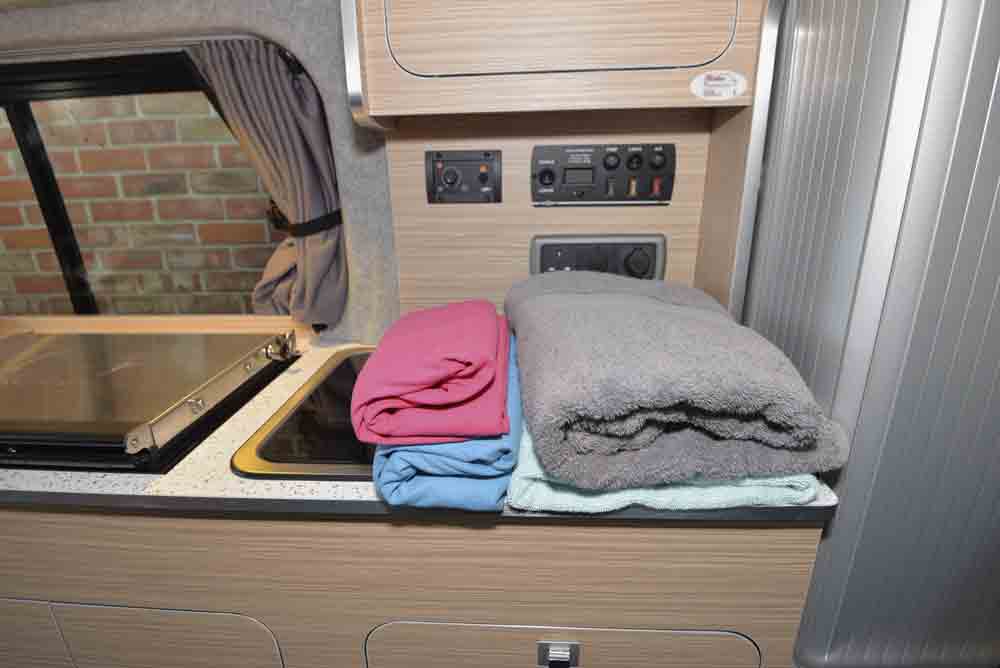
Low power gadgets for the motorhome
A common rookie error is packing your domestic electrical equipment into a motorhome. Any item that involves a heating element – kettle, toaster, microwave, hairdryer, fan heater – will generally be a heavy current consumer and may trip out the campsite’s hook-up protector.
Your domestic 3,000W electric kettle will gobble around 12.5A of electrical current, which may be too much for some hook-up systems. As some campsites’ hook-up bollards are shared, you may not have the full power allowance all to yourself, too.
It’s worth considering low-powered gadgets or looking at alternatives (a kettle that sits on the gas hob).
Make sure you know where the mains consumer unit is on your ’van.
Be aware of energy use
While you’re thinking about power, it’s worth noting that almost every electrical item in the habitation section of your motorhome will run off the 12V DC provided by your leisure battery. Plugging into a mains hook-up will activate a mains charger to top up the battery, but if you’re not on a hook-up or using 12V items on the road, you need to be mindful of your energy use.
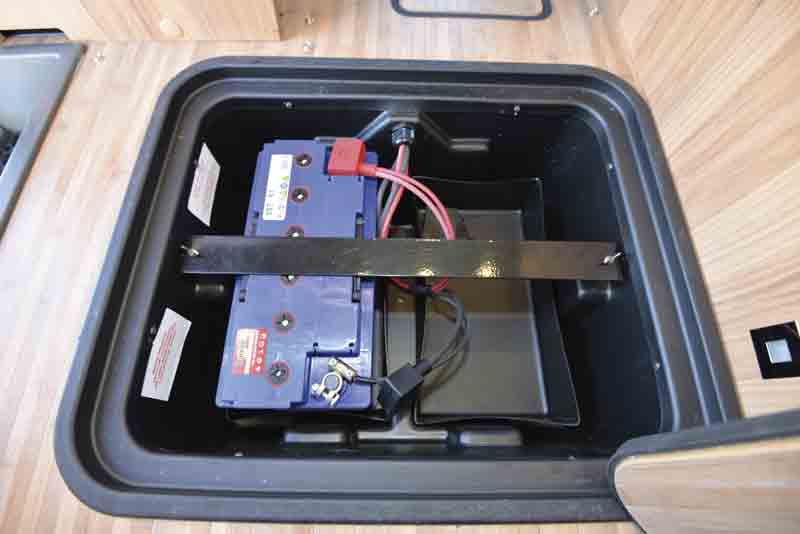
Conserve your supplies. As well as water, gas and diesel, your most precious reserve is your 12V supply. If the battery goes flat, none of your electrical systems will work.
If you plan on motorhoming without mains hook-up (and some of the best campsites are frill-free sites in amazing rural locations) it’s worth investing in a second leisure battery.
Check where your 12V fuse box is and check what type of fuses it uses. Pack a complete set of spare fuses and make sure you store them near the fuse box (or tape them to the back of a nearby cupboard door)
Get MMM for just £29.99 a month!

MMM is Britain’s best-selling motorhome magazine and it has been for over 55 years. Each four-weekly issue is packed with the best motorhome travel features, genuine reader reviews of campsites, in-depth motorhome reviews, plus the latest technical advice, buying tips and much more.
MMM’s fully searchable digital library gives you access to the latest issues, plus every edition of MMM since January 2012.
Motorhome toilet training
Let’s be blunt - ideally, you want to stick to liquids in your chemical loo, reducing nasty niffs and making the cassette easier to drain and clean. They will cope with solids but you’re better off using campsite loos if you can. If there’s no alternative, change your loo daily. Depending on your tank capacity, most loos only need emptying every two or three days for liquids.
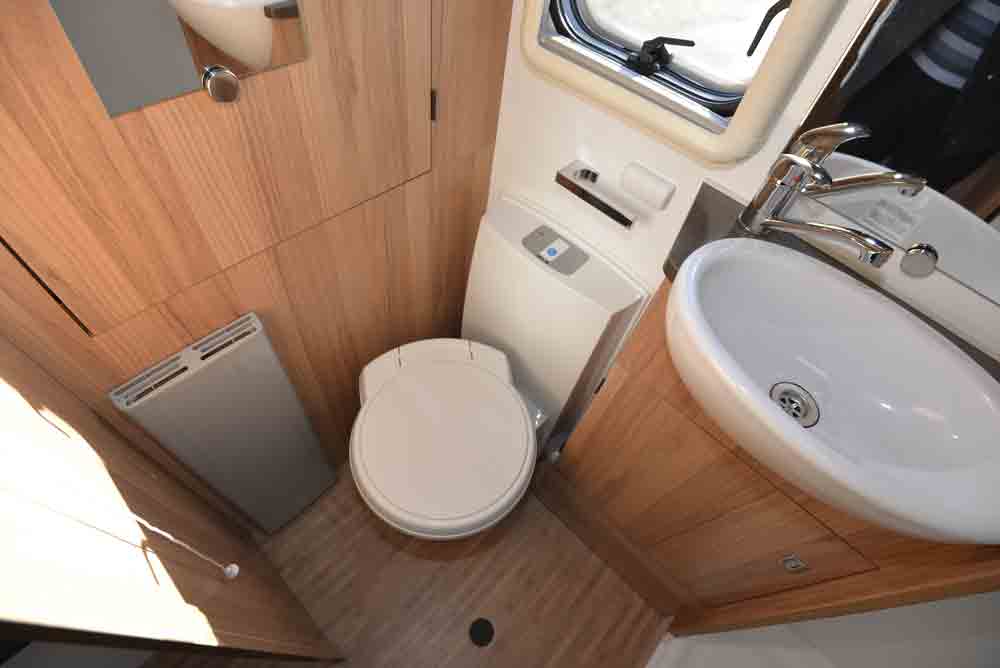
While the loo is empty, familiarise yourself with how to empty it. Most cassettes simply slide out after releasing a latch and can then be wheeled or carried to a campsite empty point. You generally have to rotate a nozzle, unscrew a cap and then press the air pressure release button to drain out any liquid.
Rinse it out a couple of times with fresh water and then return to your ’van. It’s easiest to pour in fresh loo chemical while the tank is out of the ’van but, if you forget, you can always chuck it in from the top with the slide hatch in the open position.
Short and sharp showers
Those 20-minute showering extravaganzas you enjoy at home don’t really work in a motorhome. Do that in most motorhomes and you’ll drain all the hot water out of the tank (typically just 10-litres of hot) plus the bulk of the main fresh water tank in minutes.
A better plan is to wet your body with the motorhome shower then switch it off to lather up. Then switch it back on to rinse yourself off. With a finite water supply it’s all about conserving supplies.
Many people simply opt to use the campsite showers. Pack flip flops for padding to and from the shower block.
Before setting off in your motorhome
Switch the fridge on for a couple of hours before you set off and run it on the mains as they can take several hours to cool down to temperature. Try to limit opening the door – they’re less efficient when running on 12V while you’re in transit.
Before driving off:
Unplug the mains hook-up lead from the house - coil up the cable and store it somewhere handy.
Make sure any rooflights, windows and doors are latched and that your electric hook-up cover is clipped in place.
Check you’ve got all the keys for the external lockers and especially the locking water filler cap.
Check your tyres are correctly inflated – the latest motorhomes have tyre pressure monitoring systems so they will alert you to any issues.
Belted up in travel seats
If you have people travelling in the rear, make sure they’re in designated travel seats and are wearing a three-point seatbelt. If you don’t have rear seatbelts, don’t take rear passengers.
Fuel up when you can
Campsites can be located in all kinds of wonderfully remote places and they may not always be near any facilities, so always fill up your supplies of gas and fuel whenever you see a filling point.
Arriving at the campsite
Many modern motorhomes run close to their payload limits, so it’s wise to travel with an empty water tank. So the first thing you do when you arrive on a campsite site is fill up your water tank.
As most motorhomes have a large built-in water tank this will either involve driving it close to a water tap, or running a hose from a ‘full service’ hook-up point.
Park at your pitch, plug your mains hook-up cable into your motorhome’s socket and then plug the other end into the electric hook-up bollard and check you have electrical power inside.
If you don’t, check the hook-up bollard’s consumer unit hasn’t been tripped – reset it if it has (sometimes you have to ask the site owner to do it). If you still haven’t got mains power, check your motorhome consumer unit hasn’t been tripped and reset it.
Leaving the campsite
It’s a good idea to empty both your waste water tank and loo. Often, campsites have a motorhome service point offering both facilities.
Position your motorhome over the empty point. Open the waste water draining valve and step back to avoid getting splashed. The 80 litres plus of water can take a while to drain, so use this time to empty the chemical loo.
When the waste has emptied, shut off the drain valve and secure it. It’s a good idea to have some hand wipes or alcohol gel located in the cab.
Make sure all the windows, doors, vents and lockers are secure and that anything inside the vehicle that can fall over or move is secured safely. Pay attention to the washroom and fridge doors – we’ve all had one of these flap open on the road at some point.
When on the road, slow down and drive at the pace of the motorhome. You’re on holiday so there’s no need to rush. While you're at it, make sure your home is secured with Infiniti tracking and their motorhome trackers.
If you get delayed or miss a ferry, there’s no need to worry about where you’re going to stay. Savour this new freedom and enjoy your adventures...
Did you find this article useful? You can read the full version in the February 2019 edition of MMM magazine - buy and download a digital version of it here.
To subscribe to the print edition of MMM, click here.
Pictures ©Warners Group Publications
Buying Your Perfect Motorhome 2024
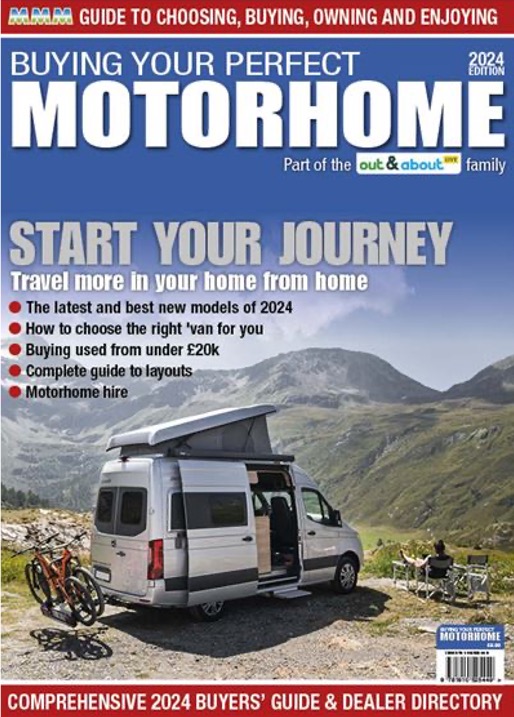
Looking for more great motorhome and campervan buying information? You need the brand-new guide to Buying Your Perfect Motorhome, it’s packed with everything you need to help you with choosing, buying, owning and enjoying your very first motorhome or campervan.
Learn more about it here.
Digital Download it now from Pocketmags for just £9.99.
Printed Or order a printed edition for just £9.99.









Recent Updates
Engine management lights: all you need to know
What is the engine management light? What does it mean, and what do I have to do? ...
Motorhome air suspension: all you need to know
Motorhomes are heavy and the additional weight of equipment and height of the bodywork can increase the loads ...
Motorhome WiFi: how to get better motorhome internet
Staying connected on the move is more and more essential, so relying on campsite WiFi isn't an option – here ...
A class of their own - our guide to A-class motorhomes
Thinking of trading up to an A-class, or even going straight to the top of the motorhome tree? We guide you ...
Explore overseas on a motorhome dream tour
Enjoy exotic travel in a campervan or motorhome by hiring, swapping with someone else or exporting your ...
Motorhome water systems: everything you need to know
On-board water is an important part of every motorhome – here’s everything you need to know ...
Campervanning in Europe: what you need to know
Whether you're planning a leisurely drive through the French countryside, navigating bustling city streets in ...
Campervan security: all you need to know
With thefts on the increase, it’s important to know how to keep your campervan secure and prevent campervan ...
Campervan furniture: everything you need to know
Our campervan experts guide you through all the essentials for your campervan, including tables, chairs, ...
Campervan finance: how to fund your purchase
Here we look at the different types of campervan finance available, to help you decide what’s the best option ...
Other Articles
Britain’s best used motorhomes
Want a great motorhome without paying the premium for a new one? Here's a guide to the best you can get in the pre-owned market for each layout, ...
Which motorhome? Choosing the perfect motorhome for you
Choosing a motorhome or campervan is one of the biggest buying decisions you’ll ever make, so it's important ...
Campervan washroom essentials: stay fresh on the road
Our guide will take you through the campervan washroom essentials you'll need so you're well-prepared for ...
Dogs in campervans: all you need to know
Follow our advice and your dog will enjoy campervanning as much as you do ...
Electric campervans: all you need to know
Our guide will take you through everything you need to know about electric campervans and what the future ...
Motorhome electrics: a complete guide to your motorhome electrical set-up
Motorhome electrics can dramatically enhance the convenience and comfort of your vehicle – but they can be ...
Lighting for campervans: all you need to know
We guide you through all the lighting options available for you and your campervan, including interior ...
Electric bikes for motorhomes: our ultimate guide
Read our comprehensive guide to electric bikes for motorhome owners, helping you add electric power to your ...
Our guide to 'cheap' motorhomes in 2024
If you're on the hunt for an affordable new motorhome, this is the best place to start – we've rounded up a ...
Campervans in winter: all you need to know
Here's your guide to preparing your campervan for the colder months, whether you will be using it or putting ...